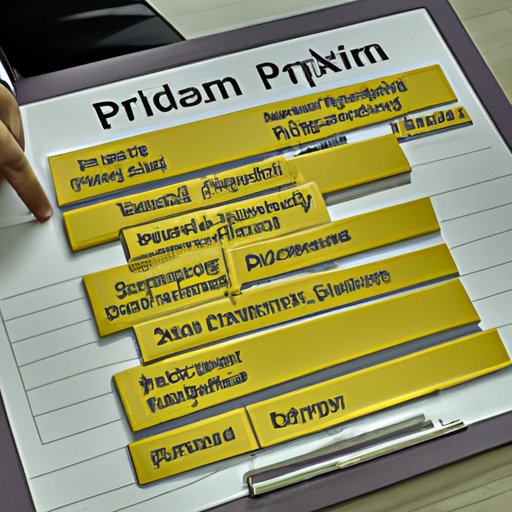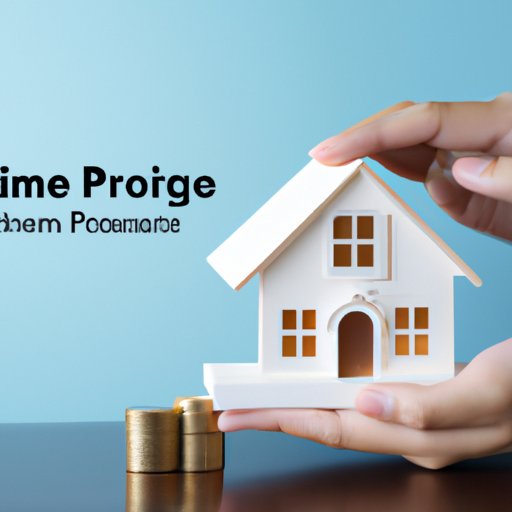Introduction
Private Mortgage Insurance (PMI) is a type of insurance used by lenders to protect themselves from losses when a borrower defaults on their home loan. It is typically required for borrowers who put down less than 20% as a down payment when purchasing a home. PMI can help homebuyers purchase a home with less cash, lower their monthly payments, and reduce their overall risk of default.

Exploring the Meaning of PMI in Finance
PMI is an important part of the mortgage process. It helps protect lenders from losses in the event a borrower defaults on their loan. PMI also helps borrowers by allowing them to purchase a home with a smaller down payment. Without PMI, many potential homeowners would not be able to purchase a home due to the high cost of a down payment.
When a lender requires a borrower to pay PMI, they are essentially reducing the risk of loss if the borrower is unable to pay back the loan. If a borrower defaults on their home loan, the lender is protected from any losses because the PMI will cover the remaining balance of the loan. It is important to understand how PMI works and the benefits it provides to both lenders and borrowers.
An Overview of Private Mortgage Insurance (PMI)
PMI is a type of insurance that protects lenders from losses if a borrower defaults on their mortgage loan. It is typically required for borrowers who make a down payment of less than 20%. PMI is paid in the form of a one-time premium or a monthly fee, which is added to the borrower’s monthly mortgage payment.
PMI is generally offered through private mortgage insurers, such as MGIC and Radian. In order to qualify for PMI, borrowers must meet certain eligibility requirements, including having a good credit score and a steady income. Additionally, the home must meet certain criteria, such as being located in an area where property values are stable and not declining.
What You Need to Know About PMI Before Taking Out a Mortgage
When taking out a mortgage, it is important to understand the factors that determine PMI rates. These include the size of the down payment, the loan-to-value ratio, the type of loan, and the borrower’s credit score. All of these factors will influence the amount of PMI that needs to be paid.
It is also important to calculate PMI before taking out a mortgage. This can be done using a PMI calculator, which can estimate the amount of PMI that will need to be paid each month. The calculator takes into account the size of the loan, the loan-to-value ratio, and the borrower’s credit score.
It is also important to understand what happens when you pay off your mortgage. Once the loan has been paid off, the borrower no longer needs to pay PMI. However, some lenders may require the borrower to keep paying PMI until the loan-to-value ratio drops below 80%.

The Benefits of PMI for Homebuyers
PMI can provide a number of benefits for homebuyers. One of the most significant benefits is that it allows borrowers to make a lower down payment. By reducing the amount of money needed upfront to purchase a home, PMI makes it easier for potential homeowners to buy a home with less cash.
Additionally, PMI can help reduce monthly payments. Because PMI is paid in the form of a one-time premium or a monthly fee, it can help borrowers lower their monthly payments. This can make it easier for borrowers to afford their mortgage payments each month.

A Guide to Understanding PMI in Financial Planning
When selecting a lender, it is important to compare PMI rates. Different lenders may offer different PMI rates, so it is important to shop around to find the best deal. Additionally, borrowers should ask about any special programs or discounts that may be available that could reduce the cost of PMI.
When it comes to financial planning, it is important to consider the costs associated with PMI. Borrowers should weigh the costs of PMI against the benefits of having a smaller down payment and lower monthly payments. This will help them determine if PMI is right for their financial situation.
How PMI Can Help Lower Your Mortgage Payment
There are several ways borrowers can lower their mortgage payment when PMI is involved. Refinancing is one option, which can help borrowers lower their monthly payments by reducing their interest rate or extending the term of the loan. Loan modifications are another option, which can help borrowers lower their monthly payments by changing the terms of the loan.
Finally, there are special programs available that can help borrowers reduce their PMI costs. These include the Home Affordable Refinance Program (HARP), the Home Affordable Modification Program (HAMP), and the Home Affordable Foreclosure Alternatives Program (HAFA). These programs can help borrowers reduce their monthly payments by reducing their PMI costs.
Conclusion
PMI is an important part of the mortgage process. It helps protect lenders from losses in the event a borrower defaults on their loan and helps borrowers purchase a home with less cash. PMI rates are determined by the size of the down payment, the loan-to-value ratio, the type of loan, and the borrower’s credit score. Borrowers should carefully weigh the costs of PMI against the benefits of having a smaller down payment and lower monthly payments.
In addition to understanding the basics of PMI, borrowers should also consider refinancing, loan modifications, and special programs that can help reduce their PMI costs. By understanding PMI and its benefits, borrowers can make informed decisions about their mortgages and reach their home-buying goals.
(Note: Is this article not meeting your expectations? Do you have knowledge or insights to share? Unlock new opportunities and expand your reach by joining our authors team. Click Registration to join us and share your expertise with our readers.)
